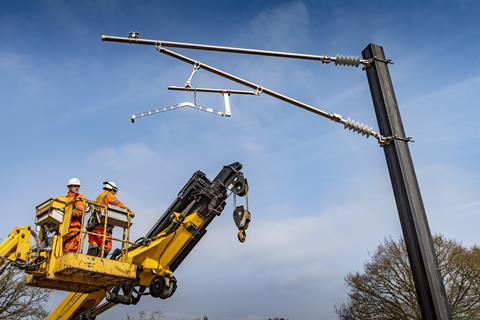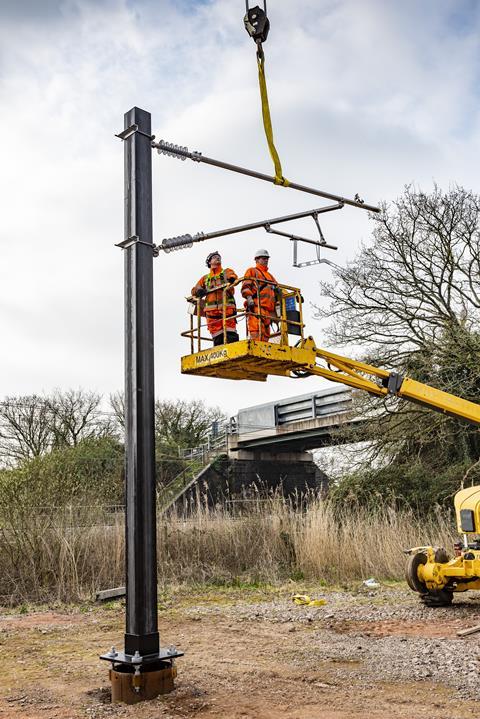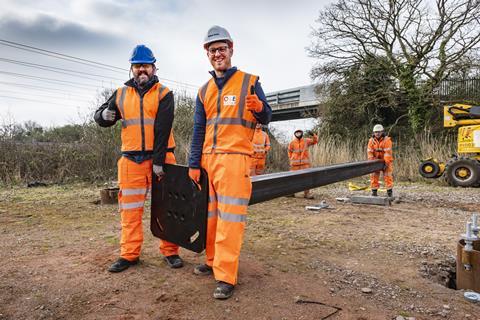
UK: A prototype composite mast designed to reduce the costs and carbon emissions of railway electrification projects has been unveiled, ahead of extensive testing to understand the full scope of its capabilities.

Branded IMAGE (Innovative composite MAst for Green Electrification), the mast weighs around 300 kg, but offers similar strength to an equivalent steel mast, which would be around 450 kg heavier. A steel mast would also require more carbon-intensive production, deep piling or concrete foundations and more energy for transport and installation.
According to the developers, IMAGE potentially offers a longer life than a steel mast. It also incorporates embedded sensors to provide condition data to inform maintenance, reducing the need for manual lineside checks.
First of a Kind funding
The composite mast has been developed by electrification engineering company Furrer+Frey, Prodrive Composites, rail technology developer TruckTrain and teams from Cranfield, Southampton and Newcastle universities, with funding from the Department for Transport and Innovate UK’s First of a Kind 2021 competition.

The partners envisage that the mast could be used on future UK electrification projects, and could also have a major export potential.
‘We believe we can slash the embedded carbon of this vital piece of infrastructure’, explained Noel Dolphin, Director of UK Projects at Furrer+Frey, when the mast was unveiled at a test site is adjacent to the Great Western Main Line in Newport on April 6. ‘By reducing the already short carbon payback period of rail electrification, and reducing the up-front investment required, we aim to accelerate the transition to a greener, faster and more reliable rail network.’
Richard Stainton, Electrification Engineering Expert at Network Rail, said composites could offer many benefits ‘and this project is helping us understand where they can be of most value’.

He said Network Rail was already using composites in some structures, and masts seemed a ‘natural’ next step. ‘Given the number of masts we expect to be required in coming years, there is huge scope for composite masts to play a role as we electrify more parts of the network’, he said.



